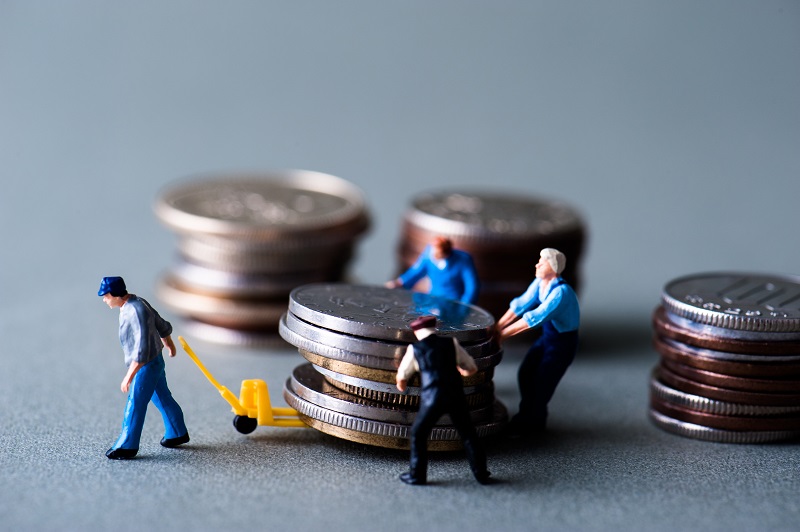When, in your opinion, does government borrowing become too much? Is it when all of the income is utilized to pay off the debt, or when the creditors start acting like the popular Nigerian Palmpay meme?
By borrowing, the government avoids having to quickly reduce spending in order to cover a temporary shortfall. Similar to an overdraft facility, borrowing from the public sector increases the government’s flexibility and allows it to keep up with its expenditure commitments and salary obligations without having to continuously reduce them.
The Nigerian government has consistently asserted that it is committed to paying for entitlements like pensions and medical care. A growing population should raise the demand for governments to spend more, which could lead to the emergence of a structural deficit. It takes into account borrowing in order to achieve goals. The truth is that borrowing is a tool, and if it’s used improperly, the entire economy still experiences a deficit—this time, though, there is a debt to repay.
One more Loan
President Muhammadu Buhari requested last week that the Senate approve his request to the World Bank for a credit facility of $800 million to fund the National Safety Net Programme. The president’s request was detailed in a letter that Senate President Ahmad Lawan read publicly at Wednesday’s plenary session.

By failing to control macroeconomic trends and spur inclusive growth, Nigeria made itself susceptible to several socioeconomic shocks that could lead to recession; which is one of the most significant inducers of borrowing. Phenomena like Covid-19 and the fall in oil prices were key indicators of Nigeria’s susceptibility.
In Nigeria, the COVID-19 pandemic had a significant macroeconomic impact, even though the nation had been able to control the virus’s spread. Job losses, closures, inflation, and irrational plans to stabilize the deteriorating economy were the hallmarks of the economy. Despite the fact that Covid-19 had sparked a tech boom in Africa and elsewhere, the economy currently exhibits voids that were never filled.
Read also: The BRICS Debate for Nigeria
Oil
Additionally, because oil accounts for more than 80% of Nigeria’s exports, 30% of its banking sector credit, and 50% of all government revenue, the decline in oil prices in 2020 also resulted in a decrease in tax revenues.
The key takeaway is that as people earn less and pay less income tax during a recession, government revenue from taxation decreases. Borrowing increases as a result of the government having to spend more on jobless compensation.
The inability of administrators to efficiently administer borrowed cash to crucial capital and economy-boosting projects may be the root reason for Nigeria’s ongoing borrowing needs.
According to DMO data, the federal government borrowed N26.91 trillion at the end of March 2021 (the latest official amount), up from N3.55 trillion at the end of 1999 (local and international debt). With the administrations of Olusegun Obasanjo, Umar Musa Yar’Adua, Goodluck Jonathan, and the current Muhammadu Buhari, this is a 658% gain in 21 years.

A Pitiable Situation
The debt situation in Nigeria is both comical and awful. For example, Lai Mohammed explicitly informed Nigerians in 2018 that the same five projects—the 2nd Niger Bridge, the Lagos-Ibadan Expressway, the Abuja-Kano Expressway, the East-West Road, and the Mambilla Power Station—had received $1.5 billion from the Buhari administration.
Also read: How Bitcoin Fluctuations Impact Nigeria’s Economy
The main work’ for the 2nd Niger Bridge would cost N210 billion, according to Babatunde Fashola, the former minister of works and housing. A few months later, Julius Berger Plc was given a N206 billion contract by the government to build it. Prior to this, claims that the project had funding allocations in 2016 and 2017 that were never used surfaced; N12.5 billion in the 2016 budget and N7.5 billion in the 2017 budget.
The government released N33 billion in December 2018 for the bridge’s construction. You get N53 billion after adding it to the N20 billion the Senate said wasn’t utilized. After the government had disbursed N206 billion, N20 billion, another N33 billion, and the $1.5 billion multi-project funds, one would anticipate that nothing was hindering the project from taking place.
Fast forward to 2020, when President Buhari’s administration seeks Senate approval for a $29.9 billion loan. The second Niger bridge, the Lagos–Ibadan expressway, the Abuja–Kano highway, the East–West road, and the Mambilla power station are the “5 Legacy Projects” that the administration listed as the rationale for the borrowing.
Jisos
The degree of financial restraint debt imposes on choices is inconceivable. Different governments are leaving their successors with financial hangovers, which will make it difficult for them to manage the economy and ultimately lead to borrowing. Under the smallest financial strain, Nigeria has searched for loans. That is hardly the behavior of a nation that wants to develop.

What is undeniable is that Nigeria’s current levels of debt are potentially unjust to future generations whose taxes will be used to pay back money borrowed to pay for today’s public spending, notwithstanding analysts’ continued disagreement about how much borrowing countries can afford.
Even the IMF, which has been Nigeria’s go-to lender, expressed disapproval of the nation’s thirst for borrowing last year and issued a warning about the dangers of allowing the situation to spiral out of control for the Nigerian state. The World Bank warned that the country’s debt, while seemingly sustainable, is “vulnerable and costly,” and the Nigerian Economic Summit Group (NESG), a group of private sector leaders, warned against what it saw as the possibility of creating “a debt burden for future governments,” according to the organization’s projection that “the Nigerian government may spend nearly 100% of its revenue on debt servicing by 2026.”
Despite the fact that his replacement will take over as president in two weeks, President Buhari is still looking for a new loan. That is another potential debt to be added to the stock of debt inheritance. If this is not the worst hangover story, I don’t know what is.





